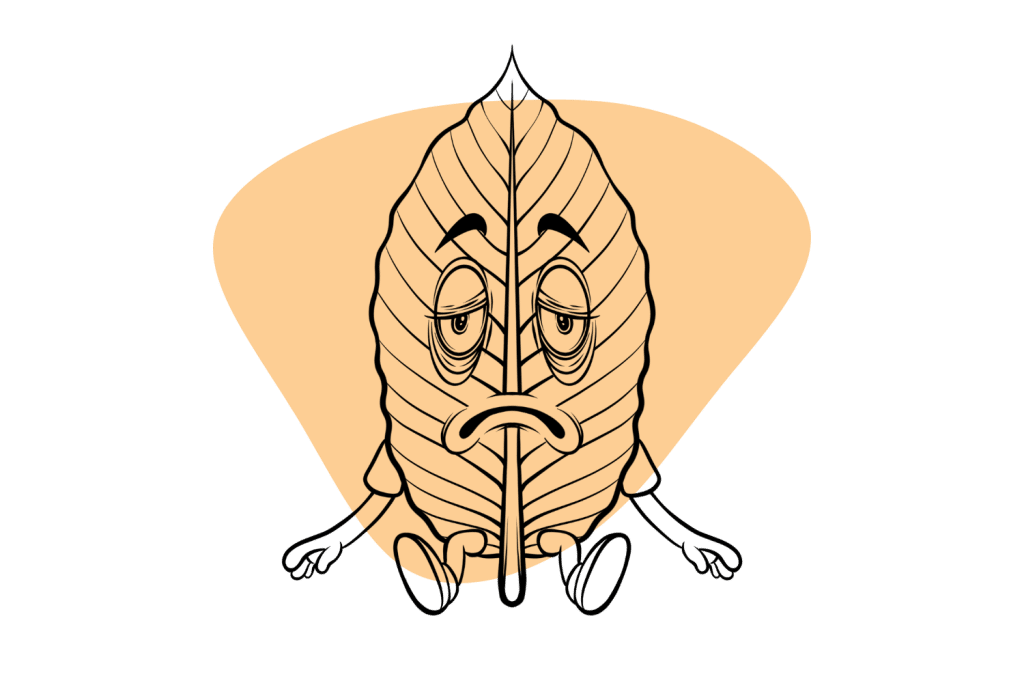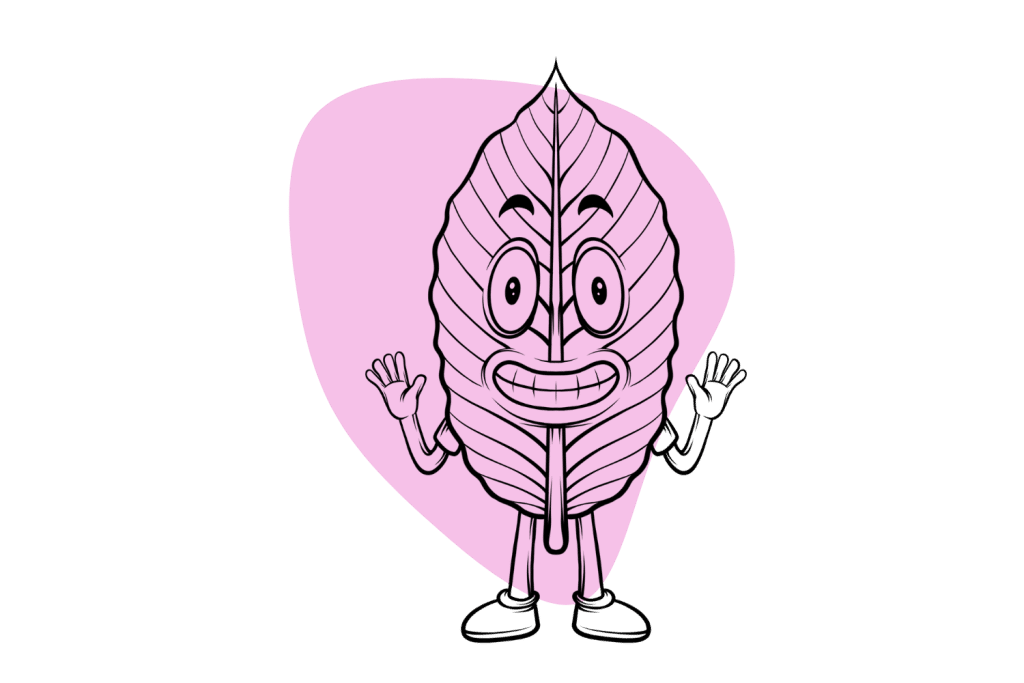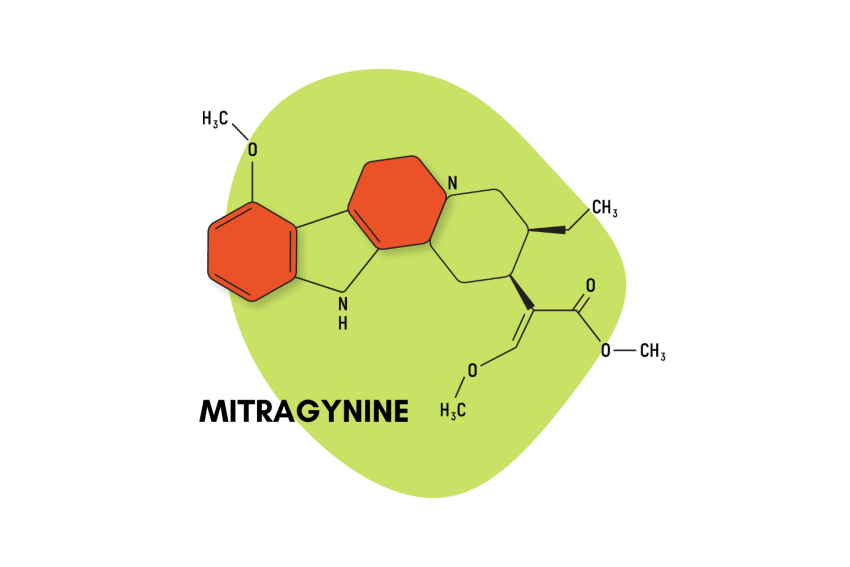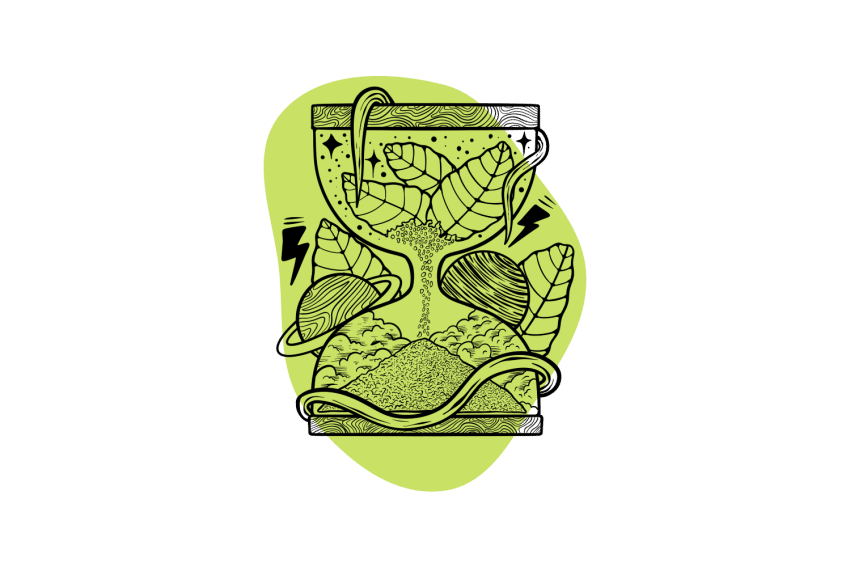What’s the Difference Between Kratom Tolerance, Addiction, & Dependence?
The words “tolerance,” “addiction,” and “dependence” are tossed around in the kratom community, but what’s the difference between them? We’ll break each one down and tell you how to avoid them.

Kratom (Mitragyna speciosa) is a medicinal plant from Southeast Asia. The leaves contain a pharmacopeia of active alkaloids — some of which serve as powerful painkillers, sedatives, and stimulants.
Despite all its benefits, there is a downside: kratom can be addictive. While it takes awhile to get to this point, it’s good to be aware of the signs so you can avoid it.
It starts with building a tolerance to kratom and progresses to addiction, then dependence. We’ll break each one down so you know the difference.
Kratom’s Effects & Addiction
Any substance that makes you feel good has the potential for addiction. Kratom has the ability to ease chronic pain, help facilitate better sleep, alleviate anxiety, and improve mood — setting up perfect conditions for people to become dependent.
In higher doses, kratom acts similarly to opioids and can serve as a means of escapism. Users can get “drunk” on kratom to produce a euphoric and spaced-out state of mind that temporarily eliminates feelings of insufficiency, sadness, and pain.
Kratom has about 16 primary alkaloids (but more than 45 altogether), and each interacts with different receptors in the brain. The collective interaction of these active ingredients is what provides kratom’s characteristic effects.
Alkaloid ratios vary from one kratom strain to the next and change the emphasis of effects — some strains are much stronger painkillers; others are more energizing and uplifting.

The alkaloids found in the largest quantities are mitragynine and 7-hydroxymitragynine — these make up over 70% of the total alkaloid profile of the plant and are opioid receptor agonists. However, they interact with other receptors, too, like serotonergic, adrenergic, and dopamine.
Using kratom often and in high doses causes a person to develop a tolerance to it, and they can eventually experience withdrawal symptoms if heavy use escalates and goes on for too long.
The Road to Addiction: From Tolerance to Dependence
There are two main ways kratom can be addictive — through compulsive behavior and physical dependency, but it doesn’t happen suddenly. There are stages of addiction.
Stage 1: Tolerance
The first stage happens when you build a tolerance — or when you need to take more of the substance to feel the same effects.
For example, you usually take 4 grams for pain, but one day, you notice it doesn’t seem to do much. Instinctually, you want to take more — but this is when it’s best to back off. There’s no addiction at this point, but your body has already adjusted to it and needs more in order for there to be any impact.
Kratom tolerance can happen rather quickly, so listen to your body and take breaks from it once in a while (one or two days a week).
Stage 2: Addiction
The second stage happens because of kratom’s beneficial effects — this could be its painkilling, anxiolytic, sedative, energizing, or intoxicating qualities. People who take kratom want to feel a certain way.
For example, someone may take kratom to feel less physical pain; another might take it as a form of release from what they deem a painful existence.
When we rely on a substance (herbal or otherwise) to feel a certain way, we’re essentially using it as a crutch. Over-relying on substances like this almost always leads to deeper, more serious forms of addiction and compulsion, called dependency.
Stage 3: Dependency
The third stage is dependence, which is more likely to happen slowly over several months of heavy, chronic use.
When someone takes kratom over and over without breaks, the body responds by resisting its effects by hiding some of the receptors kratom relies on. There’s a reason our bodies aren’t flooded with painkillers, and there’s a reason why we feel pain.

As the progression from tolerance to addiction continues, we eventually reach a point where the body has made so many changes to resist the effects of kratom that we can no longer maintain balance (homeostasis) without it. As soon as kratom wears off, we feel sick. This is called withdrawal.
What Does Kratom Withdrawal Feel Like?
Kratom withdrawal symptoms start to kick in when the effects start to wear off. The severity of it depends on the level of tolerance the body has formed.
Minor withdrawal symptoms usually involve depression, irritability, and lethargy. Some people experience a runny nose and body aches similar to what a cold or flu feels like.
More severe withdrawal can also involve severe diarrhea or constipation, anxiety, increased sensitivity to pain, insomnia or hypersomnia, muscle cramps and jitteriness, and more. It’s very uncomfortable, and there are only two ways to make it stop — either take more kratom or wait it out until the body readjusts.
Withdrawal symptoms persist until the body can reverse the changes it made to resist the effects of the drug. This can take anywhere from a few days to a few weeks.
The following are common symptoms you could expect:
- Anxiety
- Body aches
- Chills
- Cravings
- Depressed mood
- Insomnia
- Irritability
- Itching
- Joint pain
- Loss of appetite
- Restlessness
- Runny nose
- Tension
- Tremors
- Watery eyes
- Yawning
Withdrawal symptoms can be quite taxing on your body and mind, primarily if you are used to large doses.
One of the most effective ways to get off of kratom is by tapering — the other option is to quit cold turkey.
By tapering, you can minimize the severity of withdrawal symptoms. This makes the pain of withdrawal symptoms much more manageable but will also prolong the amount of time it takes to stop using kratom.
The key here is to stick to a rigid dosing schedule. You want to take enough kratom to offset the withdrawal symptoms but not enough that you’re eliminating them entirely. If you want to reverse the effects of dependence on kratom, you’ll need to experience some of these symptoms. If not, you may actually be further increasing your dependence on the herb.
Outside of tapering, getting through kratom withdrawal relies on managing specific symptoms as best you can.
For vomiting or diarrhea, drink lots of water and electrolyte drinks to regain any lost fluids. For pain, you can try taking other non-opiate painkillers like NSAIDs or CBD.

We also recommend you take a couple of days off to get all the rest you need. This way, your recovery will be faster, and you will feel better throughout the process.
Surrounding yourself with friends and family can have a very positive impact on your recovery. Simply having someone to listen will help lessen the mental toll of withdrawal, and their presence alone can make a significant difference during these challenging times.
How to Avoid Building A Kratom Tolerance
If you notice you’re building a tolerance to kratom, here are ways to reverse it. Some take notably longer than others to develop tolerance, but this does not make it less risky.
1. Take Smaller Doses
Taking large doses of kratom will significantly impact your system’s chemical balance: your body will have to make drastic changes to compensate for the excess of alkaloids.
If you take smaller amounts, the changes in your body will be more subtle, and there is a smaller risk of increasing your tolerance. Another benefit is that you’ll reduce the chance of side effects, so don’t take more kratom than you need.
2. Take Breaks Often
One of the worst mistakes you can make if you want to avoid addiction is taking kratom repeatedly throughout the day. Even if you’re taking smaller amounts, the potential for dependence is significantly higher if you don’t give your system a break.
This is because when you take kratom several times a day, its alkaloids are constantly saturating your system, leaving no time for your brain to go back to normal. This way, you can develop an addiction much quicker than if you spaced out your doses.
Just as important as not taking more than a dose a day is taking breaks a couple of times a week. It’s essential that kratom leaves your system entirely if you want to avoid developing physical dependence.
We recommend avoiding daily use if possible. Taking at least two days off kratom each week is usually enough to maintain a healthy lifestyle. The least often you need to use kratom, the better.
3. Switch to a Different Strain
Although no scientific research has been carried out on this subject, anecdotal evidence suggests that some types of kratom are more addictive than others. Red-veined strains are often regarded as more addictive because of their higher amounts of 7-hydroxymitragynine.
Because of this, switching to a milder, white-veined strain might lower the potential for addiction. If you are used to highly sedative strains, try using a more balanced green-veined one, and stay away from those marketed as “enhanced.”
If you are unwilling to switch entirely to another strain, you could still try rotating between a couple of different ones. This may help your body not get used to a particular alkaloid concentration, thus making the process of dependence slower.
Even if you don’t buy into this theory, there is research showing that extracts are more dangerous and addictive, so stay safe and limit your use of those.
Is Kratom Safe? What Are the Risks?
Kratom is considered safe, especially compared to synthetic opioids like morphine or oxycontin. Moreover, kratom’s composition is entirely different from opioids, and the risk of overdose death is about 1,000 times greater with opioids than it is with kratom.
Still, every person’s body reacts differently to kratom, and many can experience unpleasant side effects even after a low dose. These side effects are not dangerous, but if you notice any, we recommend you stop taking kratom until you discuss it with your doctor.
The most common side effects of kratom include:
- Dry mouth
- Headaches
- Increased heartbeat
- Nausea
- Stomach pain
There is much misinformation on kratom use and addiction, backed by large anti-kratom entities such as the FDA. Much of it stems from prejudice and a misunderstanding of the functioning of the herb.
In 2019, the World Health Organization (WHO) declared that kratom does not represent a hazard to public health, debunking many of these claims. However, some still say that kratom is a miraculous cure to pain and lethargy, which is also not true.
The truth is that kratom is safe when used responsibly, that is, by controlling your dosage and taking care of your mental well-being. When we abuse kratom or use it to escape from our problems, it has the potential to become addictive and make all matters worse.
Kratom Tolerance Is One Step Closer to Addiction
Kratom can be addictive, especially if you use it to self-medicate or have previously struggled with substance abuse. Fortunately, symptoms of kratom addiction and withdrawal are not life-threatening.
Addiction and dependency are much easier to avoid when you can spot the first signs of a problem — tolerance. And that’s just the first step.
You must also address those issues that made you seek kratom in the first place and avoid falling back into the same habits. The ability to address and deal with these underlying issues can make or break one’s ability to remain sober.
Users who visit a therapist or focus group for months or years after quitting have the best chance of avoiding relapse.
Regardless of your situation, remember that you can find help if you need it.








